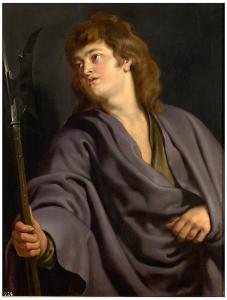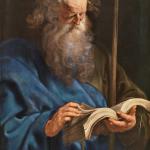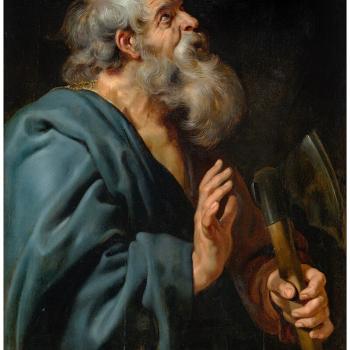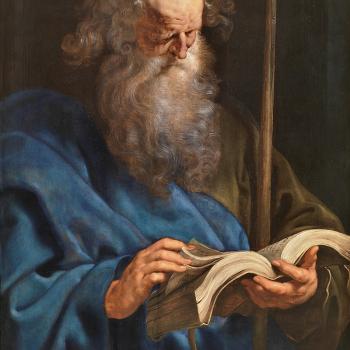Out of the original twelve apostles, only two are Gospel writers: the Apostle John and the Apostle Matthew. John’s Gospel reveals a number of details and facets the other Gospels don’t include. While people hand out single copies of John’s Gospel, it’s not uncommon for us to overlook the value in the other three…including the Gospel of Matthew.
Matthew, also known as Levi, is an apostle with a rich history many overlook. In addition to his Gospel, Matthew led a portion of the early church. With only a few references in the New Testament, let’s learn about this most prolific Gospel writer from the early church.
Who was Matthew?

The Apostle Matthew was from Capernaum, Galilee in first century Judea. Referred to in a few places as Levi (in one place as Levi son of Alphaeus, Mark 2:14), Matthew’s name changed after becoming a disciple. As the son of Alphaeus, he was also the brother of another apostle, James son of Alphaeus. We don’t know for certain if Matthew was married or had children. Scripture tells us prior to his ministry, Matthew was a tax collector:
As He walked along, He saw Levi son of Alphaeus sitting at the tax collector’s booth. “Follow me,” Jesus told him, and Levi got up and followed Him.
While Jesus was having dinner at Levi’s house, many tax collectors and sinners were eating with Him and His disciples, for there were many who followed Him. When the teachers of the law who were Pharisees saw Him eating with the sinners and tax collectors, they asked His disciples: “Why does He eat with tax collectors and sinners?”
On hearing this, Jesus said to them, “It is not the healthy who need a doctor, but the sick. I have not come to call the righteous, but sinners.” (Matthew 2:14-17, NIV)
This passage reveals the regard Jews had for tax collectors. Tax collectors were independent agents of the Roman government. They were commissioned to collect an amount for the Romans and then free to surcharge as much as desired to process those fees. As a result, tax collectors were considered extortionists, charging high rates for their own personal gain. They would often lie about what people actually owed and pocket the difference for themselves. First-century Jews saw tax collectors as traitors, rejecting their own people while embracing the governmental system that oppressed them.
Matthew’s walk with Jesus
The most detailed aspect of Matthew’s walk with Christ is his call to follow Him. The story does not vary much from that found above, even though it is found in the three synoptic Gospels.
As Jesus went on from there, He saw a man named Matthew sitting at the tax collector’s booth. “Follow Me,” He told him, and Matthew got up and followed Him.
While Jesus was having dinner at Matthew’s house, many tax collectors and sinners came and ate with Him and His disciples. When the Pharisees saw this, they asked his disciples, “Why does your teacher eat with tax collectors and sinners?”
On hearing this, Jesus said, “It is not the healthy who need a doctor, but the sick. But go and learn what this means: ‘I desire mercy, not sacrifice.’ For I have not come to call the righteous, but sinners.” (Matthew 9:9-13, NIV)
Matthew’s call would be prominent for the reason he was a tax collector. The fact that Jesus called someone from such a hated profession speaks volumes to the God we serve.
Matthew is also mentioned:
- With the other apostles: In all passages referring to the twelve as a group (Matthew 10:3, Mark 3:18, Luke 6:15).
- The Last Supper: Along with the other twelve, Thomas was present at the Last Supper (Matthew 26:17, Mark 14:12)
Matthew after the resurrection
There’s one other mention of the Apostle Thomas in the New Testament, found in Acts 1:12-14, speaking of the election of Matthias to replace Judas.
Then the apostles returned to Jerusalem from the hill called the Mount of Olives, a Sabbath day’s walk from the city. When they arrived, they went upstairs to the room where they were staying. Those present were Peter, John, James and Andrew; Philip and Thomas, Bartholomew and Matthew; James son of Alphaeus and Simon the Zealot, and Judas son of James. They all joined together constantly in prayer, along with the women and Mary the mother of Jesus, and with his brothers. (NIV)
Later accounts
The Apostle Matthew’s ministry included leadership over Jewish Christians in Judea in the earliest of days. His Gospel is noted for its uniquely Jewish quality, written in style to teach those who would have known of the coming Messiah through Jewish teaching. As he expanded out, Matthew’s work took him to several countries, although there is no general consensus which ones they were. Every early church historian, however, agrees that the Apostle Matthew went to Ethiopia and most agree he went to Persia.
It’s unclear if he died naturally or as a martyr. Most suggest he was martyred in Ethiopia after converting the king’s virgin daughter to the faith. When a new king desired to marry her and she refused (having committed herself to the faith), he had the Apostle Matthew killed around 68 AD.
Matthew is a saint throughout the Christian world and also an inspirational faith in Islam and the Druze faith, especially for his work in Ethiopia.
There are a number of apocryphal gospels attributed to or associated with Matthew. Whether or not he is the author is of dispute.
- The Gospel of Pseudo-Matthew
- Acts of Matthew
- Gospel of the Ebionites
- Gospel of the Hebrews
- Gospel of the Nazarenes
Summary
The Apostle Matthew’s role among the twelve is often overlooked. We hear of his conversion, but not much of his interaction with the others. This can lead someone to feel he was of less importance than others. His history, however, tells a different story. Matthew’s story is truly one of a sinner saved by grace, someone who came to Jesus as he was, welcoming Him in, and living a transformed life. His journeys took him to many places as he led first Jews, and then Gentiles in powerful ways as an apostle.
It also reminds us that we shouldn’t write off anyone, regardless of their status. While we are quick to say that we shouldn’t overlook poor or downtrodden people, God also doesn’t overlook those who are of means. Matthew was employed, reasonably well-to-do, and willing to leave everything to follow Jesus. Stereotypes don’t work in God’s Kingdom.
After this, Jesus went out and saw a tax collector by the name of Levi sitting at his tax booth. “Follow Me,” Jesus said to him, and Levi got up, left everything and followed Him.
Then Levi held a great banquet for Jesus at his house, and a large crowd of tax collectors and others were eating with them. But the Pharisees and the teachers of the law who belonged to their sect complained to His disciples, “Why do you eat and drink with tax collectors and sinners?”
Jesus answered them, “It is not the healthy who need a doctor, but the sick. I have not come to call the righteous, but sinners to repentance.” (Luke 5:27-32, NIV)


















